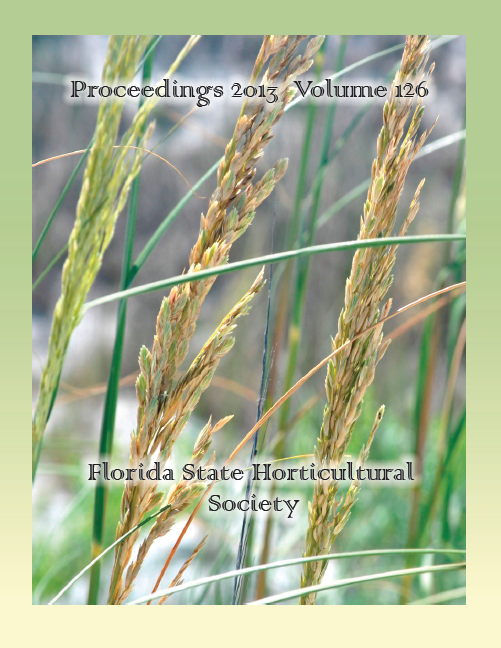Published 2013-12-01
Keywords
- HLB,
- Huanglongbing,
- citrus greening,
- PCR,
- nutrition
- orange,
- ‘Valencia’ ...More
Abstract
Citrus trees infected with Huanglongbing (HLB) bacteria become weak and develop dieback, resulting in lost production. These trees eventually decline to a production level that is not economical to maintain in a citrus operation. Sixteen-year-old ‘Valencia’ (Citrus sinensis Macf.) orange trees on Swingle citrumelo rootstock [C. paradisi × Poncirus trifoliata (L.) Raf.], 100% infected with HLB, in decline and losing production, were severely pruned (buckhorned) to stimulate regrowth and the new flush treated with foliar nutritional sprays. Nutritional sprays included the “Boyd cocktail” and two other nutrient treatments that contained phosphites plus nickel and cobalt. Heavily pruned trees and unpruned standard control trees were compared for shoot growth and canopy development. Pruning was done in Feb. 2010 before the spring flush. Spring shoot growth on the pruned trees was twice the length of unpruned trees and had larger leaves. Summer shoot flush on the pruned trees was three times the length of the unpruned trees. Both pruned and unpruned trees bloomed and set fruit in the spring of 2011. The 2011–12 fruit crop on pruned trees was not significantly different from the unpruned trees. The 2012–13 crop on pruned trees was greater than on the unpruned trees and had reached economic production. There was no difference in fruit size between pruned and unpruned trees. Rejuvenation of HLB trees by severe pruning and foliar nutritional sprays may be an alternative to tree removal and replanting with new trees when existing citrus trees begin to lose production due to HLB infection.

